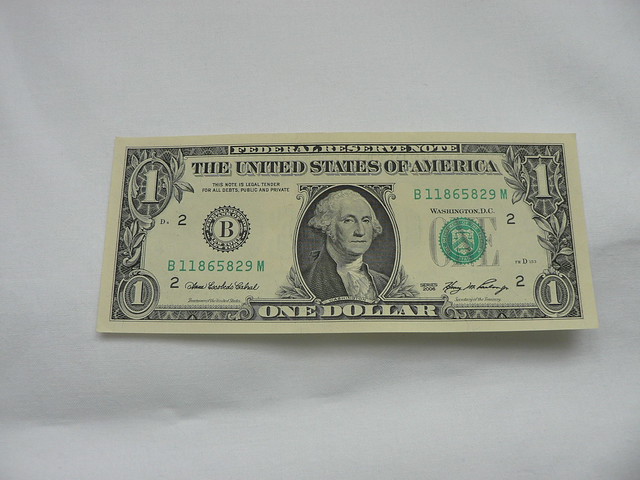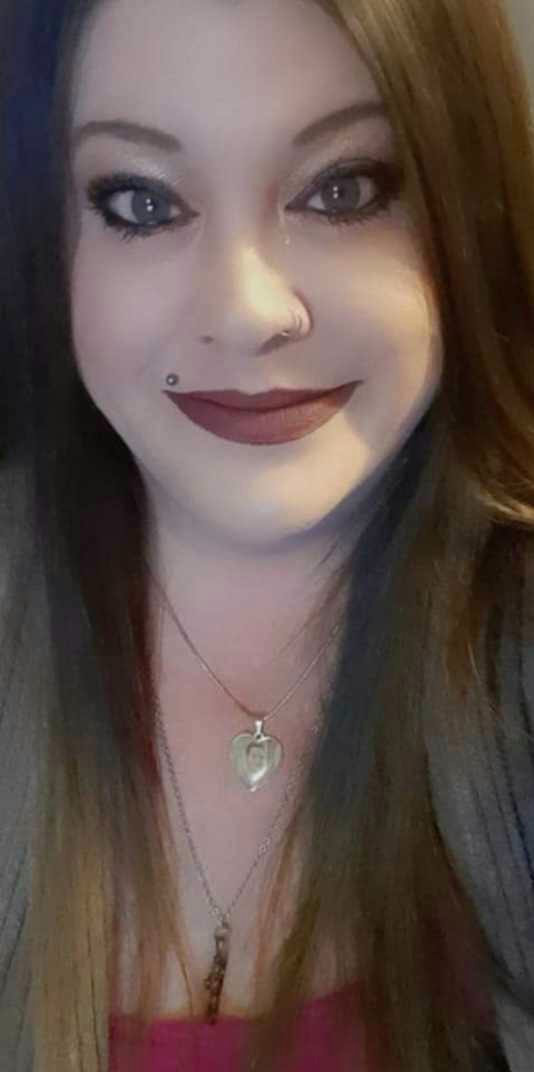|
by Stacey Carroll, Contributing Writer
In this modern era, we are forced to spend money to live. We need money for rent, food, gas, etc. Every day we spend money on something even if it's just rent and electricity. So, what do we really need to live? Rent or a Mortgage We can't get out of this one unless we have a family member willing to let us stay for free. Since that doesn't happen very often, we're forced to either pay rent or a mortgage. This is a fixed expense. However, we can limit how much we spend on our housing. I try not to spend more than one week's salary on housing. If the salary is too low to allow for that, I choose the cheapest apartment I can find in a safe area. Typically, that's no more than $550. Electricity We need it for running our computers, phones, lights, stoves, coffee makers and a whole host of other appliances. This is also a fixed expense, but the monthly amount often varies. To keep electricity costs at a minimum, open the windows, keep the lights off during the day. If you work, turn the A/C or heat to a higher or lower setting while you are gone. Typically, I turn my A/C to 80 in the summer and my heat to 65 in the winter. It doesn't matter how cold or hot it is in my apartment if I'm not there. Phone We need a phone to take and receive calls and communicate with friends, family, coworkers, and potential employers. Most of us own cell phones that never leave our sides. In 2005, I moved into my first apartment. I had a cell phone. I never activated a land line. It was an expense I couldn't afford and couldn't justify. The only reason I'd ever need a land line is if I had to do a lot of faxes at home. Internet We need the internet for a lot of the same reasons we need the phone; to apply for jobs, to communicate with friends and family, to research, and to keep up on current events and happenings in the world. I also use mine to watch TV and movies. I purchased the minimum plan from my internet provider. Car The United States doesn't have a good mass transit system in place outside of most major metropolitan areas. This means that we need cars. Cars come with semi-hidden expenses such as gas, insurance and maintenance costs. I purchased a used car in 2001 for $1000. For the past 10 years I haven't had a car payment and my maintenance and gas per month doesn't equal a car payment. I spend on average a thousand dollars a year in oil changes and car repairs. About every three years that increases to $2000, but it's still not a car payment. Over the last 10 years, I've saved a minimum of $20,000 by not having a car payment. I try to keep my living expenses at a minimum. I try not to pay more than $550 for an apartment. I try to make sure that my electricity is no more than $100 a month. I don't have a car payment. I don't have a landline phone. I purchase minimum speed internet connections, and I don't change regardless of how much my job pays. If I'm making more money than I need, I save more or I get more massages and facials, but if I'm at a low paying job, I'm not worried about where my next meal is coming from. The trick is to always be prepared for the worst and to always keep living expenses at an affordable minimum. 
Author Bio:
Stacey Carroll is the author of the thriller series - Avia. She also authors the paranormal erotica series - The Blooddoll Factory. Stacey grew up in Indianapolis, Indiana. she went to college at Indiana State University (ISU) and graduated with a Bachelor's degree in aerospace in the professional pilot program. She has flown Cessna 152s, Cessna 172s, the Pipe Seneca and the King Air. She also graduated with a minor in computer science that specialized in web design. She has always been interested in reading and writing, and the first book she was ever read was the Grimms Brother's Fairy tales. From the ages of 6 to 11, she read the Nancy Drew series. By the age of 11, she had graduated to Stephen King novels. A few of her favorites include Carrie, Tommyknockers, The Dark Tower Series up to book 3 (That's where it stopped in the late 80s/ early 90s), Pet Semetary, The Shining, Night Shift, The Stand, It, Cujo, Christine, The Eyes of the Dragon and Thinner (Richard Bachman). In her teen years, she moved on to Anne Rice and got through about four of those books before they degraded. If you've ever read Anne Rice, you know book 5 isn't readable. Stacey has read a couple Harry Potter books as she was introduced to them in the early 2000s, and she's never read or watched anything Twilight or 50 Shades. Sorry. I'm a vampire purist, and nothing needs to be said about the latter. You already know. She is currently an author and freelance writer. She received an honorable mention in Alfred Hitchcock's Mystery Magazine in 2008 for a short story entitled The Field. In 2014, she was published in 13 Stories by Us by MacKenzie Publishing. Other books by Stacey
0 Comments
by Stacey Carroll, Contributing Writer
In lean times, it makes sense to reevaluate how we spend our money. The best rule of thumb is to spend no more than 60 percent of your net monthly income which creates a 40 percent buffer. A 40 percent buffer should cover all the unexpected expenses we typically incur during the month without having to dip into credit cards or savings accounts on a regular basis. Base Income, Gross Income, and Net Income First we start out with a base income. Let’s say we make $15 an hour and work 40 hours a week. This gives us a gross amount of $2400. We can’t do our calculations on gross income because we don’t physically see all that money. Taxes, medical insurance, and other deductions come out of our pay before we ever see it. For simplicity's sake, let’s assume that the taxes are 25% and insurance is $70. every two weeks. We have to subtract this from $2400 which gives us a total of $2260. Now we need to multiply this by .75 to get our net monthly income of $1695. This is the figure that we will work our calculations on. Rent and Mortgage Payments The largest expense for most of us is our rent or mortgage payments. Typically, realtors allow you to spend up to 33% of your gross income or $733 in this scenario. That’s almost half of the net income we just calculated. A better way to do this is to spend no more than 25% to 28% of your net monthly income. This gives us a housing cost range of $423 to $474.60. Now, we need to figure out how much 60% of $1695. $1695 * .60 = $1017. Next, subtract the estimated rent amount: $1017 - $474.60 = $542.40. That’s $542 for everything else, groceries, electric, cell phones, car payments, and entertainment. Utilities and Other Expenses Let’s take this a step further and assume no car payment, no cable TV, and no landline phone. This leaves a basic set of utilities: cell phone, cable internet, electricity, car insurance, gym membership. A basic cell phone plan runs about $40, gym membership $45, car insurance $60, electricity $100, and the cheapest cable internet about $32. Subtracting all these bills leaves us with $265 for groceries and miscellaneous expenses for the rest of the month. When done successfully, this plan would leave just about $600 per month extra for unforeseen expenses and saving. By the end of the year, someone following this plan would have a max buffer of $7200. 
Author Bio:
Stacey Carroll is the author of the thriller series - Avia. She also authors the paranormal erotica series - The Blooddoll Factory. Stacey grew up in Indianapolis, Indiana. she went to college at Indiana State University (ISU) and graduated with a Bachelor's degree in aerospace in the professional pilot program. She has flown Cessna 152s, Cessna 172s, the Pipe Seneca and the King Air. She also graduated with a minor in computer science that specialized in web design. She has always been interested in reading and writing, and the first book she was ever read was the Grimms Brother's Fairy tales. From the ages of 6 to 11, she read the Nancy Drew series. By the age of 11, she had graduated to Stephen King novels. A few of her favorites include Carrie, Tommyknockers, The Dark Tower Series up to book 3 (That's where it stopped in the late 80s/ early 90s), Pet Semetary, The Shining, Night Shift, The Stand, It, Cujo, Christine, The Eyes of the Dragon and Thinner (Richard Bachman). In her teen years, she moved on to Anne Rice and got through about four of those books before they degraded. If you've ever read Anne Rice, you know book 5 isn't readable. Stacey has read a couple Harry Potter books as she was introduced to them in the early 2000s, and she's never read or watched anything Twilight or 50 Shades. Sorry. I'm a vampire purist, and nothing needs to be said about the latter. You already know. She is currently an author and freelance writer. She received an honorable mention in Alfred Hitchcock's Mystery Magazine in 2008 for a short story entitled The Field. In 2014, she was published in 13 Stories by Us by MacKenzie Publishing. Other books by Stacey
by Stacey Carroll, Contributing Writer
When I was in my 20s, I was not concerned about saving for my retirement. I figured I had forty-five years to work and worry about retirement, and that’s if I even got there. In my family, most of us work until the day we die. The only person I knew who was saving for retirement was my dad. My mom was not saving for retirement. I didn’t start thinking about retirement until I entered my 30’s, and still then it wasn’t a fully formed thought. It was a question. Do I really want to work every day for the rest of my life? The answer was a fast no. How to start saving for retirement was a more complex question. IRA CD The first thing I did was open an IRA CD. My reasoning was simple. The interest earned was more than my savings account, and I only needed $100 dollars to open the account. The catch was that I had to auto draft $50 dollars into the CD every month. It wouldn’t amount to a lot of money by the end of the CD’s term, but it was a start. 401k The next thing I signed up for was my company’s 401k. I decided to put 10% of my income into the 401k. My company would match it dollar per dollar until I reached a certain level. I never hit that level, and I never missed the 10% coming out of my check. The only hindrance was what to do with the 401k when I left the company. I knew if I took a withdraw, I would lose the company match, and I would be taxed as if it were income. I didn’t want to do that. Luckily, I had my IRA CD. When the time came, I made two phone calls; one to the company managing the 401k, and one to my bank. The transition was seamless. The company managing my 401k wrote a check and mailed it to my bank. The money went into the IRA CD. I kept the match, and I didn’t get taxed. Stocks I lucked out when it came to stocks. I bought near the end of the 2008 crash, but I had been waiting for it. History told me that there would be a stock market crash during my lifetime. I took about a thousand dollars, and bought as many stocks as that would buy. In the time that I’ve owned them, they’ve gone up and down significantly, but I’m still ahead. I’ve still earned more money on my stocks than I would have had I left the money in my savings account. My goal for retirement is to not touch this money until I need it for retirement. I know at this point that it is no where near what I need to retire. But, it is a start, and it is more money than my mom ever saved for her retirement. 
Author Bio:
Stacey Carroll is the author of the thriller series - Avia. She also authors the paranormal erotica series - The Blooddoll Factory. Stacey grew up in Indianapolis, Indiana. she went to college at Indiana State University (ISU) and graduated with a Bachelor's degree in aerospace in the professional pilot program. She has flown Cessna 152s, Cessna 172s, the Pipe Seneca and the King Air. She also graduated with a minor in computer science that specialized in web design. She has always been interested in reading and writing, and the first book she was ever read was the Grimms Brother's Fairy tales. From the ages of 6 to 11, she read the Nancy Drew series. By the age of 11, she had graduated to Stephen King novels. A few of her favorites include Carrie, Tommyknockers, The Dark Tower Series up to book 3 (That's where it stopped in the late 80s/ early 90s), Pet Semetary, The Shining, Night Shift, The Stand, It, Cujo, Christine, The Eyes of the Dragon and Thinner (Richard Bachman). In her teen years, she moved on to Anne Rice and got through about four of those books before they degraded. If you've ever read Anne Rice, you know book 5 isn't readable. Stacey has read a couple Harry Potter books as she was introduced to them in the early 2000s, and she's never read or watched anything Twilight or 50 Shades. Sorry. I'm a vampire purist, and nothing needs to be said about the latter. You already know. She is currently an author and freelance writer. She received an honorable mention in Alfred Hitchcock's Mystery Magazine in 2008 for a short story entitled The Field. In 2014, she was published in 13 Stories by Us by MacKenzie Publishing. Other books by Stacey
by Stacey Carroll, Contributing Writer
I got lucky in 2008. I was working a good job after years of struggling to make ends meet. I was able to save between $300 and $600 a month on a regular basis, and since the job included bonuses, I banked my bonuses. This left me with more money in my bank accounts than I had ever seen, and that includes my college years when I was getting two loan disbursements a year. Once I realized I had extra money, I had some very serious choices to make. I could keep the money and ignore my delinquent debts, or I could get a copy of my credit report and start making phone calls. The first thing I did was talk to my dad, who is a certified CPA, and a friend who had gone through the same debt issues I was dealing with. They both told me to make the phone calls and see if I could negotiate a settlement amount to pay off the debts. I owed about $6000 to various credit cards and financial institutions. I wanted to spend about $2000 to pay off that debt. I was warned, however, not to give too much information. The only thing they needed was the payment information. They didn't need to know where I worked, how much I made, my bank account information, or where I lived. If they had that information, they might try to garnish my wages to spite my willingness to pay off the entire debt right now. My dad even told me a horror story from his past when he went to pay off a delinquent debt. They didn't want his money right then, they wanted his employer information so they could garnish his wages. Needless to say, he didn't give them the information and kept calling until he found someone willing to take the payment. I started making phone calls. The first creditor I called related to an old phone bill from 2001 when I thought I needed a landline. They settled the $100 bill for $60 dollars. The next creditor I called held an account related to my cell phone from when I changed phone numbers and tried to help out a friend by letting her get a cell phone on my account. Cell phone companies are notorious for double billing when you change your phone number. The collection agency was willing to settle the $500 bill for a little over $200. In my first two phone calls, I had saved $340. I was ecstatic. The next creditor I called held the account of a credit card I had gotten in college. The bill was significant at $3250. I offered $1000 to settle the bill. They countered with $2700. I increased to $1500 if they would settle the debt right now. They refused to settle. I ended the call and looked at my credit report for the next creditor. While I was deciding who to call next, a debt collection agency called me and wanted to settle. It was a $2300 bill. They were willing to settle for 60%. I had just saved another $920. After some quick math, I realized I still had $320 left out of my $2000 debt paying budget. I found an eye doctor that I owed $160. He was willing to settle for $100. With $220 left, I was a little leery about calling another collection agency, but I found another credit card with a balance of $800. They were willing to settle for $400. It was over my limit, but I agreed. All in all for a day's worth of phone calls, I paid off almost $4000 worth of debt for a little over $2000. It was well worth the time and money spent, and the increase to my credit score was astounding. I was no longer a terrible credit risk. 
Author Bio:
Stacey Carroll is the author of the thriller series - Avia. She also authors the paranormal erotica series - The Blooddoll Factory. Stacey grew up in Indianapolis, Indiana. she went to college at Indiana State University (ISU) and graduated with a Bachelor's degree in aerospace in the professional pilot program. She has flown Cessna 152s, Cessna 172s, the Pipe Seneca and the King Air. She also graduated with a minor in computer science that specialized in web design. She has always been interested in reading and writing, and the first book she was ever read was the Grimms Brother's Fairy tales. From the ages of 6 to 11, she read the Nancy Drew series. By the age of 11, she had graduated to Stephen King novels. A few of her favorites include Carrie, Tommyknockers, The Dark Tower Series up to book 3 (That's where it stopped in the late 80s/ early 90s), Pet Semetary, The Shining, Night Shift, The Stand, It, Cujo, Christine, The Eyes of the Dragon and Thinner (Richard Bachman). In her teen years, she moved on to Anne Rice and got through about four of those books before they degraded. If you've ever read Anne Rice, you know book 5 isn't readable. Stacey has read a couple Harry Potter books as she was introduced to them in the early 2000s, and she's never read or watched anything Twilight or 50 Shades. Sorry. I'm a vampire purist, and nothing needs to be said about the latter. You already know. She is currently an author and freelance writer. She received an honorable mention in Alfred Hitchcock's Mystery Magazine in 2008 for a short story entitled The Field. In 2014, she was published in 13 Stories by Us by MacKenzie Publishing. Other books by Stacey
by Stacey Carroll, Contributing Writer
In my 20s, I was the poster child for how to not handle credit cards responsibly. I had heard all the vast wisdom about not charging more on your credit cards in a month than you can pay off before the end of the billing cycle. I was even given an example. My grandmother paid off all her credit cards at the end of every month. I should strive to be like her. The Taboo of Finances Well, finances and income was a taboo subject with my grandmother and in my own household. It was the equivalent of talking about sex or doctor’s visits. It wasn’t done, so it wasn’t like I could ask her how she managed to pay off her credit cards every month. Inevitably, the credit card people showed up with a folding table and credit card applications at my college campus. They were offering student credit cards and gifts for applying. I forget what the gifts were, but I wanted them so I filled out an application. Free was always in my price-range. The First Credit Card A few weeks later, my first credit card arrived with a $1000 dollar limit. I was ecstatic. I called the number and activated the card. I was positive I was moving up in the adult world. I had a credit card. I also had no income. I was a student living off student loans and work study and trying to pay for flight time out at the local airport. The First Purchase The first thing I charged on that credit card was lunch. I rarely had cash on me. Then I bought new clothes. Then I charged a flight to North Carolina for a vacation. It wasn’t long before I had spent through the limit on the credit card, so I applied for another credit card. This one had a limit of $2500 dollars. I charged flight time, gas, clothing, and more vacations. I even charged car repairs. I still had no income. I was using student loans to pay the minimum balances every month. It never occurred to me that it’d take 20 years to pay off the balances with the minimum payments. I’d worry about it later, like after college. Free Money or Not I think I looked at those credit cards like extra student loan money except I had to pay a little bit every month instead of waiting until six months after I graduated. Six months after I graduated, I had six credit cards with a combined limit of $6000, and I had lent one of those six cards to my mother who was supposedly charging and paying the balance on it. She wasn’t, but I didn’t know because all the statements went to my childhood home. I found out years later when a collection company called me to collect. I immediately called her. She’d take care of it. She never did, and in the meantime I couldn’t find work. All the credit cards in my possession went into default. I had $6000 in credit card debt and six times that in student loans. I was drowning in debt, and it was my own fault. The student loans I could put in forbearance. The credit cards punched large holes in my credit rating. Collection agency calls became the norm, and I wondered why I didn’t follow the advice I had been given in the very beginning: Don’t charge more on your credit cards than you can pay off at the end of the month. Well, the answer was simple. I never had any income to pay off those credit cards. I was living well outside my means, and I had been living that way for years. I was the poster child for bad credit card management. I never should have applied for one in the first place, much less as a student. Eventually, I got my act together and paid off those balances, but it took me eight years. To this day, I don’t have a credit card, and I don’t want one. I don’t even want the temptation of charging more than I can pay. 
Author Bio:
Stacey Carroll is the author of the thriller series - Avia. She also authors the paranormal erotica series - The Blooddoll Factory. Stacey grew up in Indianapolis, Indiana. she went to college at Indiana State University (ISU) and graduated with a Bachelor's degree in aerospace in the professional pilot program. She has flown Cessna 152s, Cessna 172s, the Pipe Seneca and the King Air. She also graduated with a minor in computer science that specialized in web design. She has always been interested in reading and writing, and the first book she was ever read was the Grimms Brother's Fairy tales. From the ages of 6 to 11, she read the Nancy Drew series. By the age of 11, she had graduated to Stephen King novels. A few of her favorites include Carrie, Tommyknockers, The Dark Tower Series up to book 3 (That's where it stopped in the late 80s/ early 90s), Pet Semetary, The Shining, Night Shift, The Stand, It, Cujo, Christine, The Eyes of the Dragon and Thinner (Richard Bachman). In her teen years, she moved on to Anne Rice and got through about four of those books before they degraded. If you've ever read Anne Rice, you know book 5 isn't readable. Stacey has read a couple Harry Potter books as she was introduced to them in the early 2000s, and she's never read or watched anything Twilight or 50 Shades. Sorry. I'm a vampire purist, and nothing needs to be said about the latter. You already know. She is currently an author and freelance writer. She received an honorable mention in Alfred Hitchcock's Mystery Magazine in 2008 for a short story entitled The Field. In 2014, she was published in 13 Stories by Us by MacKenzie Publishing. Other books by Stacey |
LIfe & Home Journal
Archives
January 2024
Categories
All
|
- Brand Shamans
- Brand Healing
- Inner Healing
-
INTENT-SIVE NATURE
- Content & Brand Elevation
- Healing Jewelry & Talismans
- Bath, Beauty, & Self-Care
- Healing Sessions
- Rituals, Herbs, & Altar Supplies
- Gawwwdess Baby Boutique
- Soul Flame Gifts
- Yoga & Meditation
- Books & Media
- Education & Homeschool Resources
- Home, RV, & Decor
- Clothing
- Pets
- Custom Orders
- Monthly Subscription Boxes
- October Festivals
- FLOW-Key Parenting
- About & Contact
- RV, Nature, & Travel Shamans
- Souls Within
- Life & Home
- Heart 'N Mind Homeschool
- The Homeschooling Mommy
- Books & Authors
- Speak Up!
- Pawsitive Pet Parenting
- Manifesterz
- Gifts In Minutes
- Brand Shamans
- Brand Healing
- Inner Healing
-
INTENT-SIVE NATURE
- Content & Brand Elevation
- Healing Jewelry & Talismans
- Bath, Beauty, & Self-Care
- Healing Sessions
- Rituals, Herbs, & Altar Supplies
- Gawwwdess Baby Boutique
- Soul Flame Gifts
- Yoga & Meditation
- Books & Media
- Education & Homeschool Resources
- Home, RV, & Decor
- Clothing
- Pets
- Custom Orders
- Monthly Subscription Boxes
- October Festivals
- FLOW-Key Parenting
- About & Contact
- RV, Nature, & Travel Shamans
- Souls Within
- Life & Home
- Heart 'N Mind Homeschool
- The Homeschooling Mommy
- Books & Authors
- Speak Up!
- Pawsitive Pet Parenting
- Manifesterz
- Gifts In Minutes






 RSS Feed
RSS Feed




